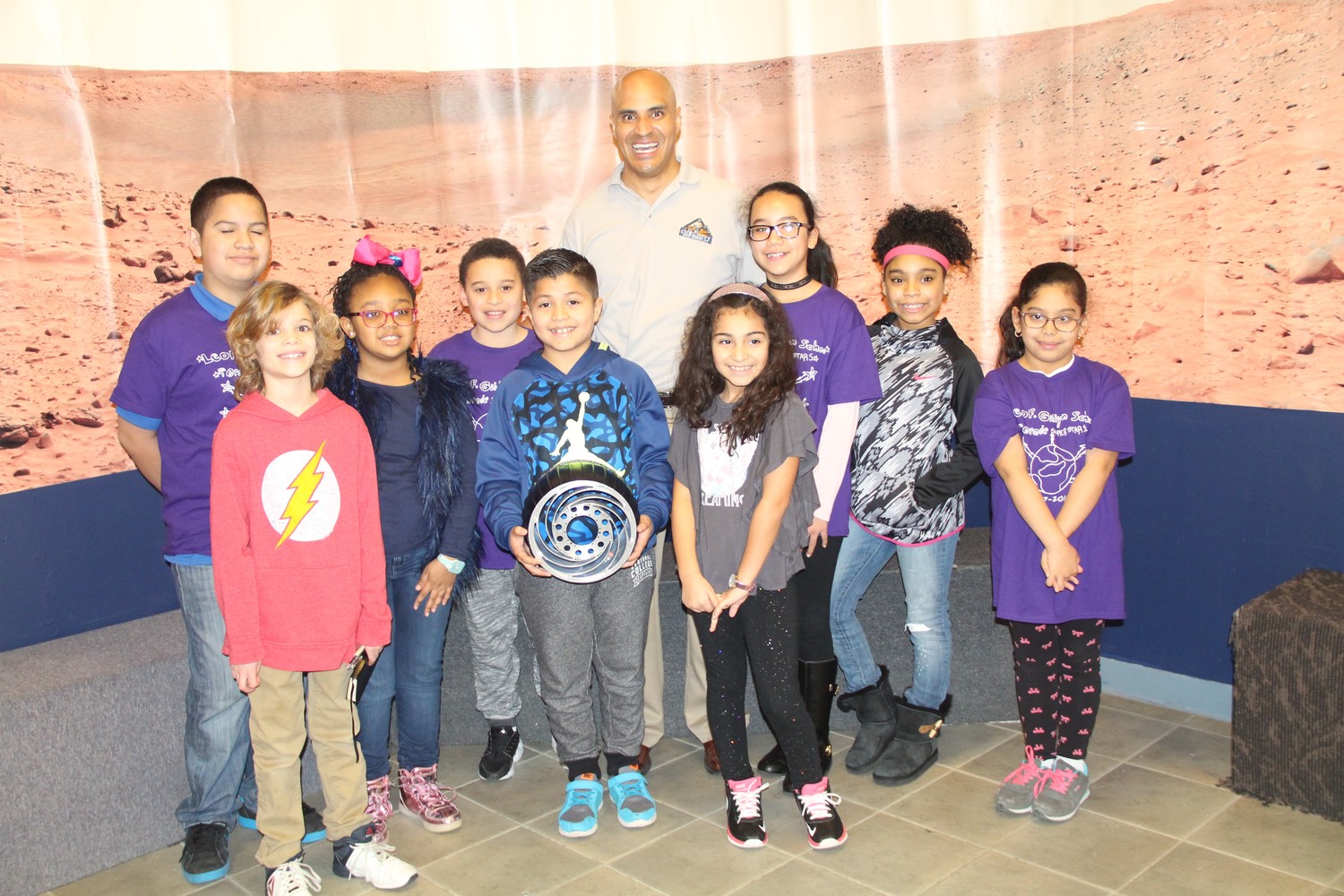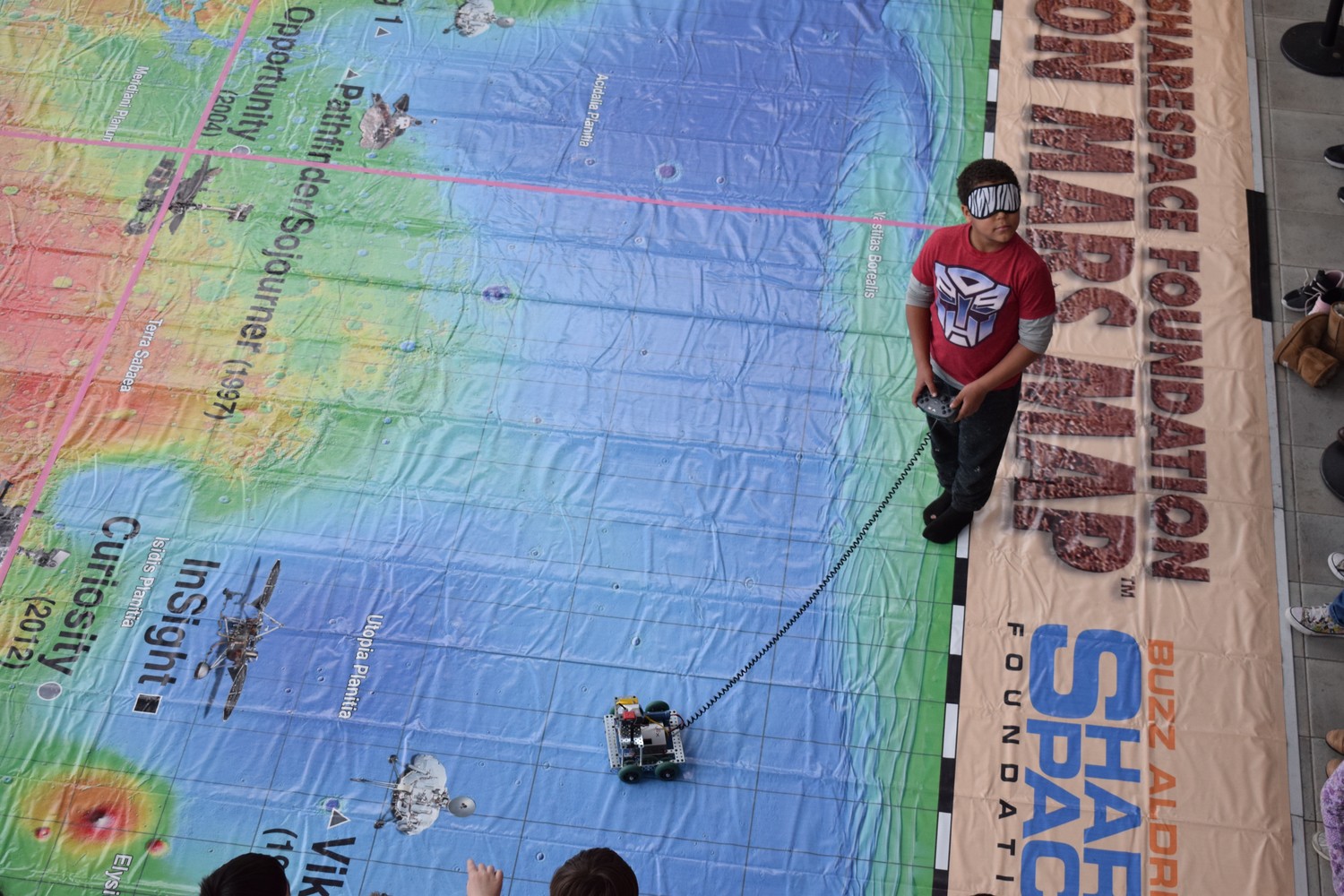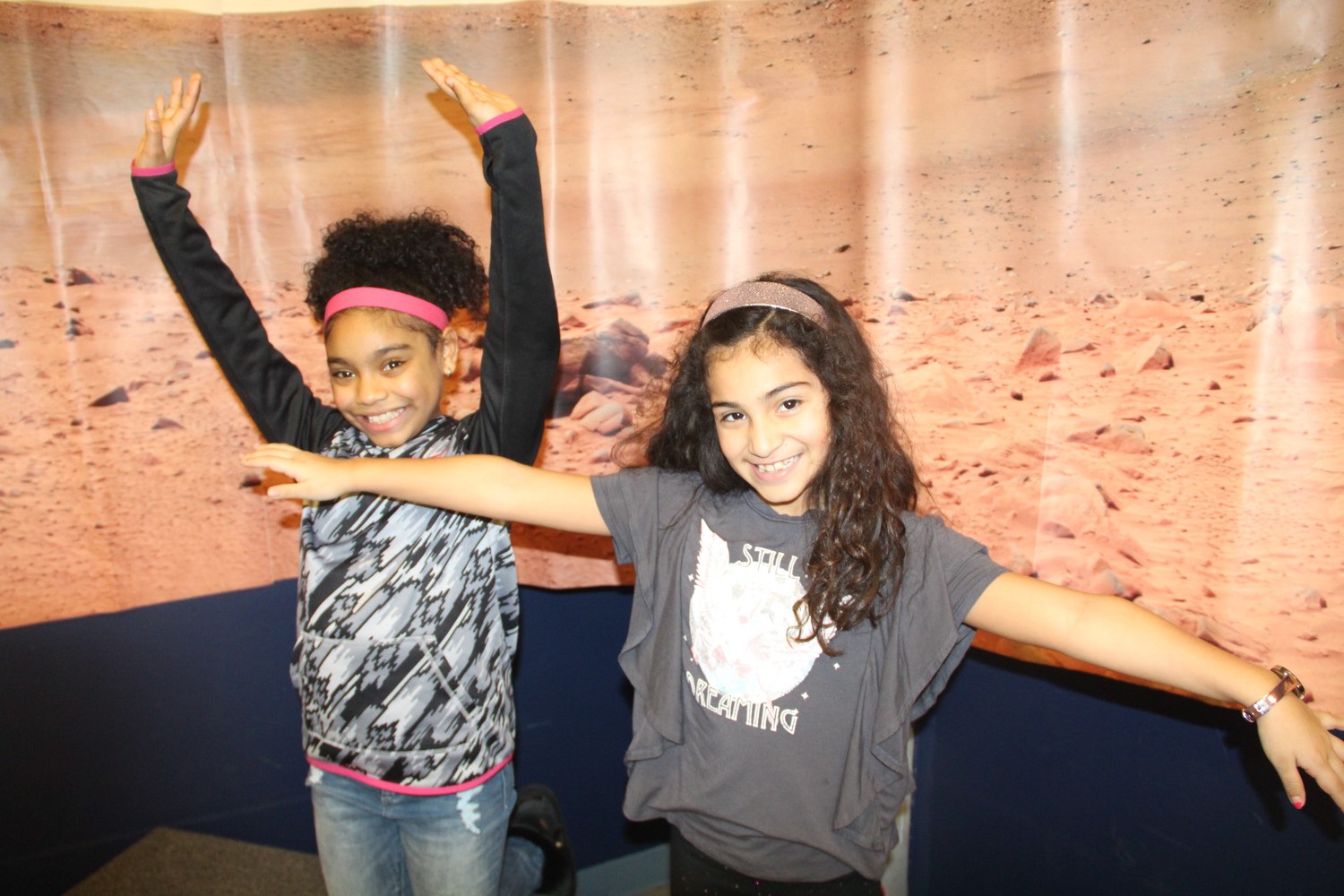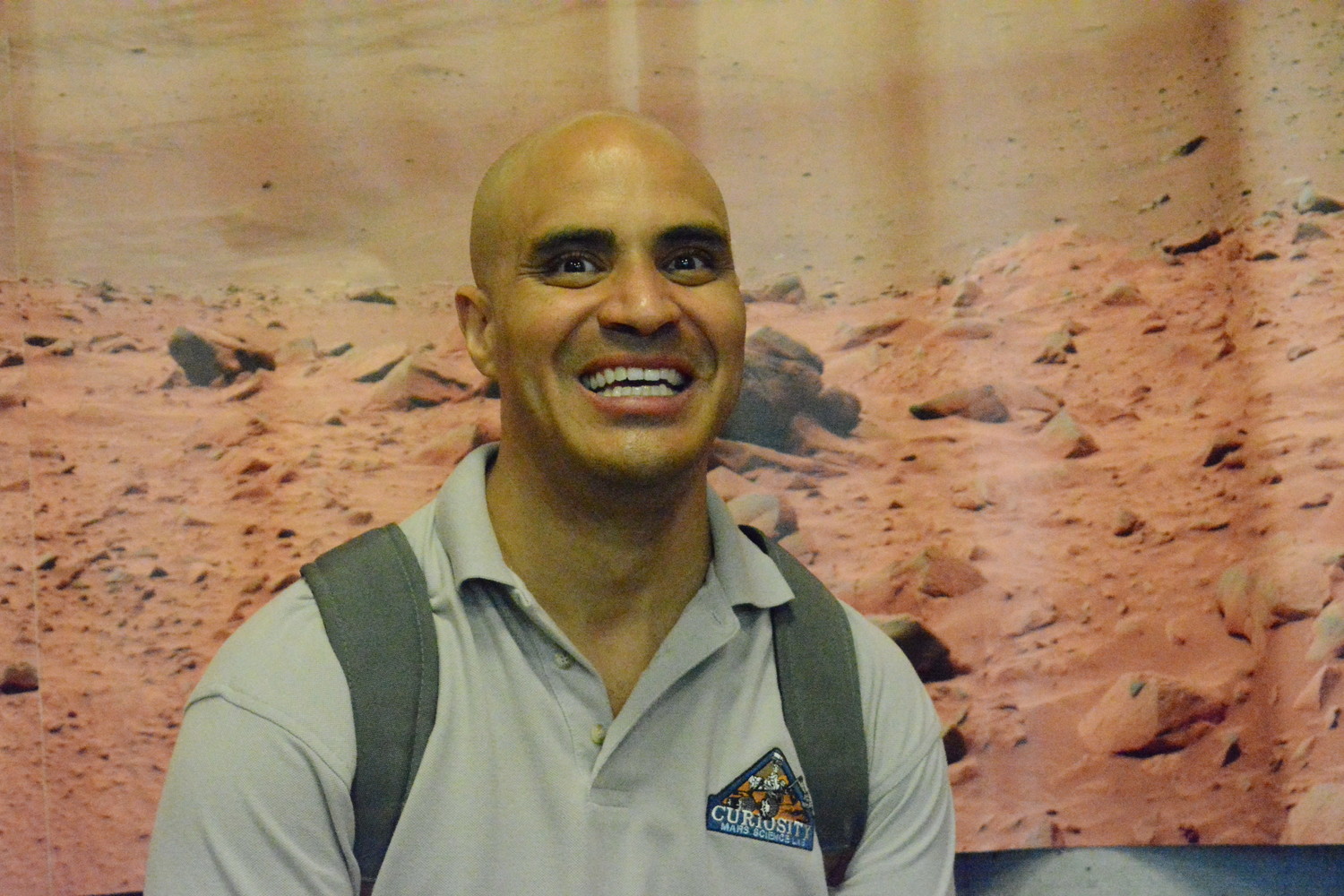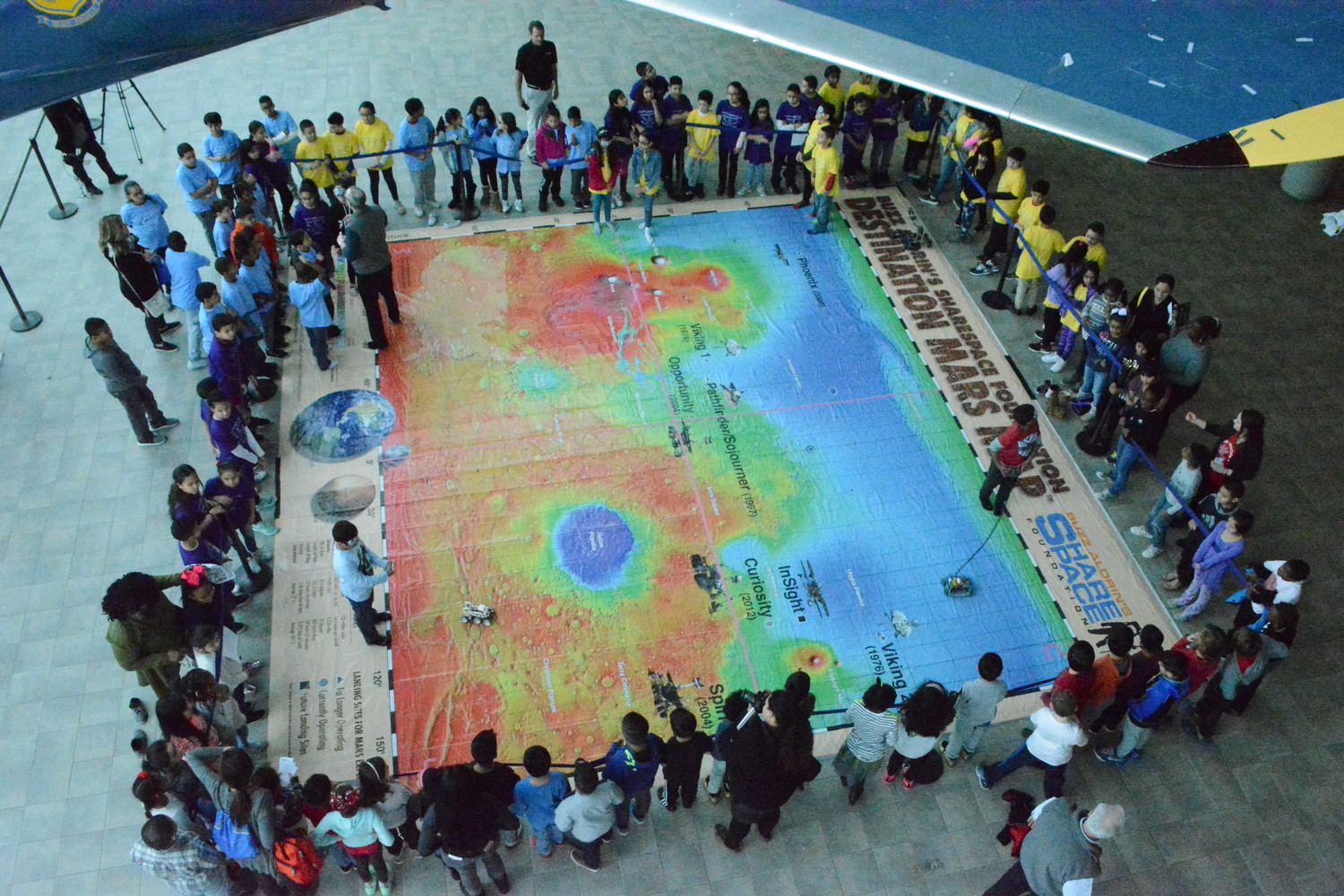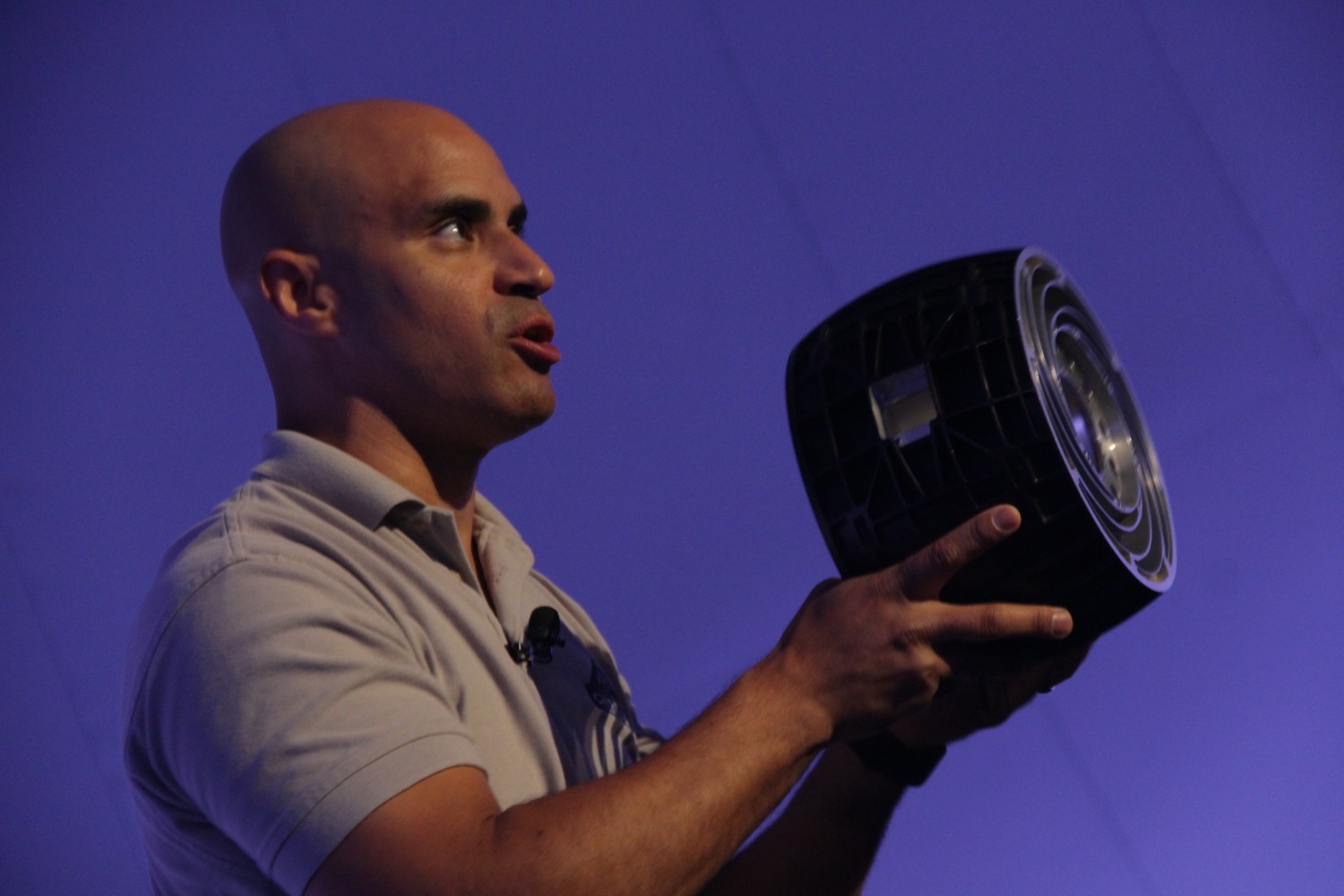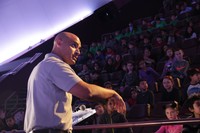Future of space discovery
NASA engineer talks Mars exploration
Students from Giblyn and New Visions elementary schools in Freeport huddled around mechanical engineer Kobie Boykins from NASA’s Jet Propulsion Laboratory at the Cradle of Aviation Museum in Garden City on Feb. 6. Excited, they bombarded Boykins with questions about Mars and space exploration.
“I want to be an astronaut when I grow up. That’s my dream,” said EvaJayde Lapice, 8, a New Visions third-grader, after meeting Boykins. “I want to feel how it is and go to other planets.”
Extending her arms out to simulate flying, Lapice, along with her friend, Emma Ascencio, 8, also a New Visions third-grader, stood in front of a picture of the red planet, where the duo gleefully shared that they wanted to study astronomy together.
“We want to go to Mars,” the girls said in unison.
More than 400 students from a number of Nassau County schools came to the Cradle of Aviation Museum for a full day of interactive activities inspired by Mars exploration. The young people listened attentively in the museum’s planetarium as Boykin detailed his experiences in helping to design Mars rovers, like the Mars Science Laboratory rover Curiosity, which launched in 2012. Boykin also shared photographs of Mars and the four rovers that have landed on the red planet, and touched on the presence of water there, adding that the planet could have once sustained life.
“Hopefully for these students, this is a stepping stone for them to believe, hey, I can do this too,” Boykin said of their experience at the museum. He said he hopes “they can connect in a way that’s not like watching TV.”
After Boykins’s presentation, students had the chance to engage in interactive activities like handling miniature rovers on a 25-by-25-foot vinyl Mars map, provided by the Buzz Aldrin Share Space Foundation. The map also highlighted Mars’s colorful topography as well as the landing sites of Mars rovers.
Younger students simulated the technology used to shield the rover from extreme heat as it enters Mars’s atmosphere with paper plates and aluminum foil. The activities helped think out of the box to use creative solutions to engage in science and engineering.
“I think today was really cool that we can come and learn about all of this cool stuff,” Ascencio said.
The students “were so mesmerized by meeting a NASA engineer and seeing all of the photos,” said Jahira Lapice, EvaJayde’s mom, who was a chaperone on the museum trip.
Boykins said he is passionate about brining space exploration to life for young people by connecting them with astronauts and engineers. “It’s easy to read a book,” he said, “but you can’t always connect with a book. You can’t always connect with a video of somebody, but seeing them live and being able to interact, I think that’s where you get that connection. I think that’s a beautiful thing.”

